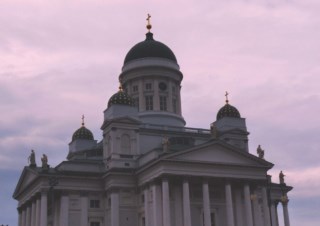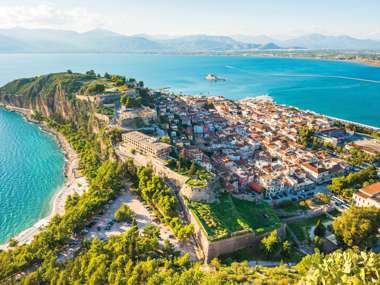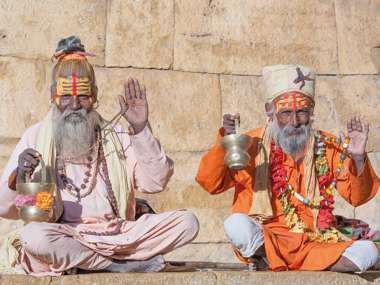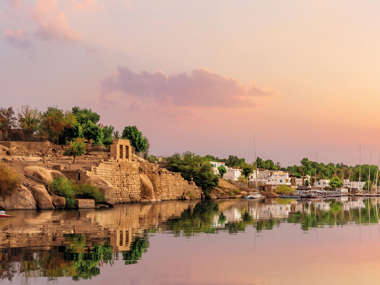Solange Hando enjoys the perfect introduction to the Baltic States on an exciting tour with Jules Verne
On the eastern shore of the Baltic, Lithuania, Latvia and Estonia regained their independence in the early 90's after the Soviet era. Now claiming six million people between them, every Baltic State maintains its own identity and culture.
VILNIUS, LITHUANIA
Wow! There it was, one of Europe’s largest Old Towns and a World Heritage Site where majestic buildings and churches pop up in Gothic, Renaissance, Baroque and Neo-Classical styles. I loved the red spires of St. Anne’s, the 2,000 stucco sculptures in St. Peter and St. Paul and near the Grand Dukes’ Palace, the white cathedral on a spacious square, dominated by Gediminas, the medieval ruler ‘founder’ of the State and its capital, built inland at the confluence of two rivers.
You could spend a week visiting museums and historic sites, but I wandered along the quiet lanes and the traditional Pilies street mostly traffic free, with outdoor restaurants and market stalls, selling amber and wool, and stunning architecture. Then if you stroll down from the Gate of Dawn, there will be more to take your breath away, Town Hall, University, Presidential Palace…
Don’t miss the castle, it’s a short climb or funicular, little more than a tower today but Vilnius most iconic landmark offers amazing views of the city, river and surrounding hills. You can see the nearby Hill of Three Crosses, equally spectacular, up 350 steps or forested trails. Far below, the Vilnele river rushes emerald green towards the placid Neris while beyond the Bernardine Gardens, you reach Uzupis, an ‘independent’ state with its own constitution, protected by a guardian angel. Beyond the capital, we explored the island castle of Trakai, mirrored like a fairytale in a romantic lake.
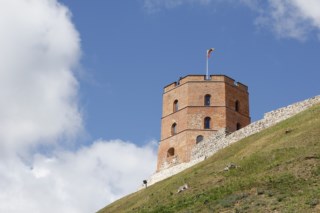
RIGA, LATVIA
About four hours from Vilnius, we reached the vibrant city of Riga stretching across the wide Daugava river, elegant bridges and promenades lining the estuary towards the Baltic Sea. My favourite spot was the left bank, trees and lawns, lush islands, small marinas tinkling in the coves. In this vast natural harbour, cruise ships dock on the edge of town, greeted by a waving statue on a stork’s nest.
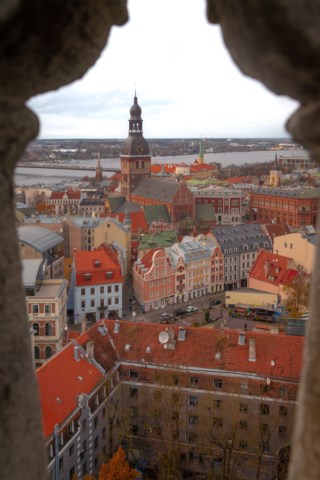
Across the water the Old Town beckoned with spires and towers all along the way. Here was the cathedral - the largest medieval church in the Baltic States, there the castle and its cannon towers, the striking House of the Black Heads (merchants guild), the medieval façades and the greatest display of Art Nouveau in Europe. No wonder this is a UNESCO site and with 3 nights in Riga, we appreciated our guided tour and plenty of free time.
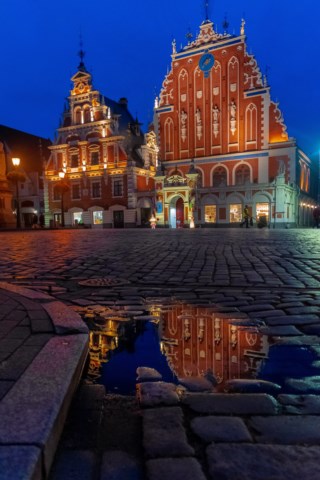
Skipping past the museums, I headed for the market, the viewing platform up St. Peter’s, the dazzling Orthodox church then I cruised on the canal and river in a wooden boat, 115 years old, refurbished by Abba’s manager… The last morning took us through green countryside as far as Rundale, an 18th century Palace by Rastrelli (who designed St. Petersburg Winter Palace) with 138 rooms (many open) and fabulous gardens reminiscent of Versailles.
TALLINN, ESTONIA
Another medieval wonder inscribed by UNESCO? This is Tallinn’s Old Town, encompassing both the Lower Town, once home to merchants and craftsmen, and the Upper Town, Toompea, a safe beautiful haven for nobles and governors. Up there, panoramic terraces show you the whole city, spires, towers and gates, medieval wall, and maybe a cruise ship or two glistening in the bay.

Dragon-head water spouts and tower, the Gothic Town Hall rises on the main square, the heart of town with bright gabled roofs and outdoor restaurants. Look out for the nearby pink castle, home to Parliament, the secret courtyards and archways and among the many churches, St. Olav’s, possibly the oldest, St. John and its stained-glass window and the imposing Orthodox Cathedral up on the hill, its onion domes seen almost anywhere in town. Time to relax? Gaze at the flower market, meander along the city walls or ramble in the parks (European Green Capital 2023).
Best of all I remember the Kadriorg Palace, only a mile or so from the city centre. It was commissioned as a summer residence for Peter the Great, who laid three bricks in the wall (still visible), but the Tsar often stayed in a humble cottage away from it all. Kadriorg is a must-see, its grand design and exhibitions, including over 900 paintings, enhanced by magnificent gardens.
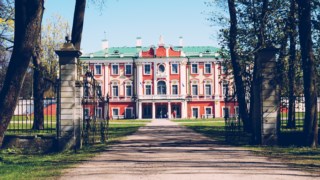
On the last leg of our journey, we boarded the ferry to Helsinki (2 hours) and followed a walking tour past the harbour and cathedral.
